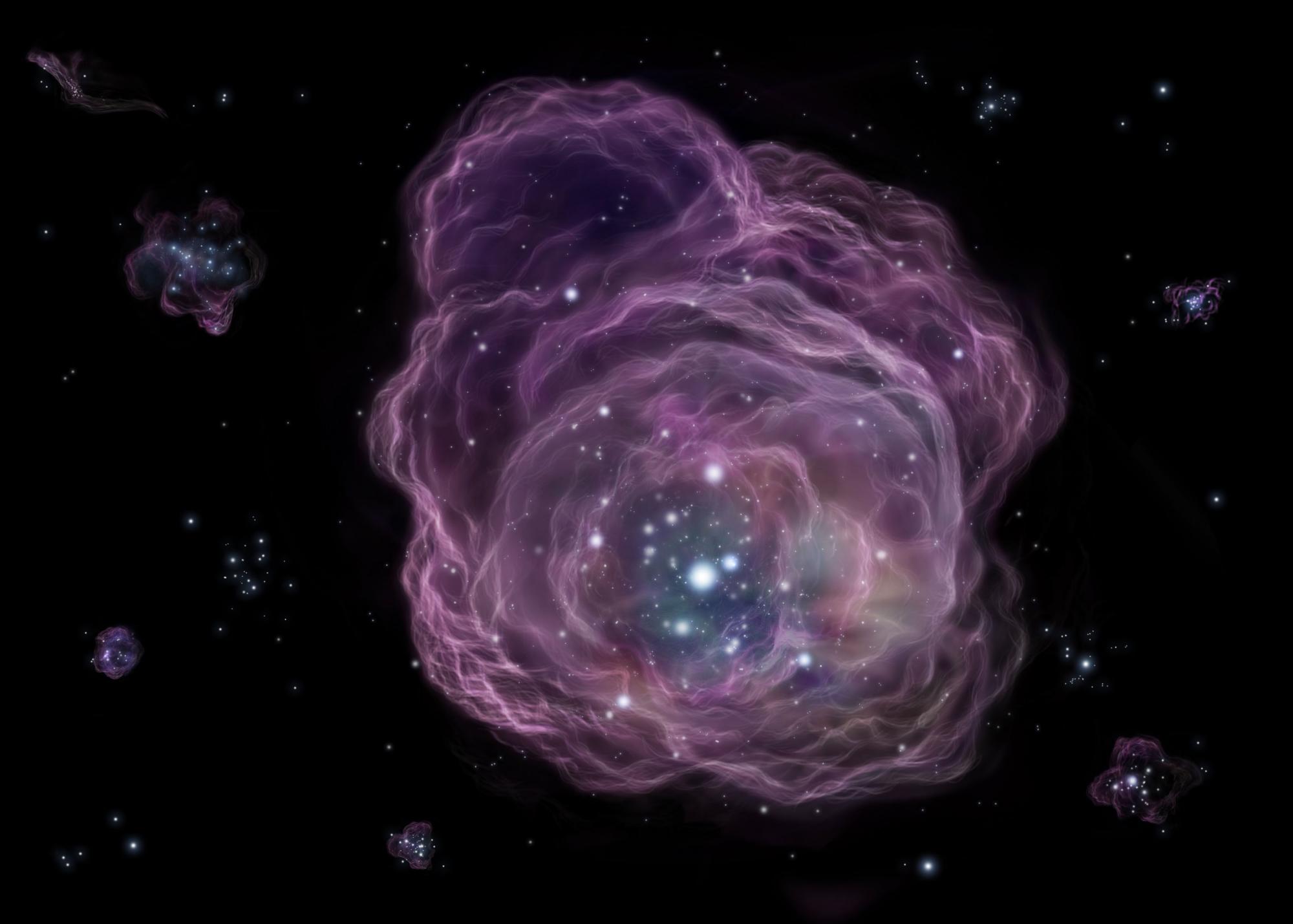
by Benjamin Recchie, AB’03
Nick Gnedin, professor of astronomy and astrophysics and scientist at Fermilab, had spent years working on theoretical simulations of the early universe, in an attempt to better understand the processes that caused the first stars and galaxies to form. But the going was slow: a program that simulated all of the interactions between energy and matter would be prohibitively complex and time-consuming. So he decided to let time be his ally instead of his enemy—and walked away.
“In numerical computing, if you want to do something you cannot do now, you can just go to the beach and lie there for five years, and come back and do it again,” he jokes. Since Moore’s Law says that computing power increases exponentially with time, the passage of time gave him the petascale computing resources he needed to run the highly detailed simulations he wanted.
Gnedin focuses on the era of reionization, the time in the universe’s history (roughly a billion years after the Big Bang) when the first stars started to shine; their radiation was enough to ionize previously neutral interstellar gas. These early stars and ionized gas conglomerated into the first galaxies and set in motion the cycle of stellar birth and death that we see today. Understanding what happened during reionization is crucial to our understanding of what came both before and after.
Gnedin’s project is called Cosmic Reionization on Computers (CROC). Its goal, he says simply, is “to do it right.” There are different ways to do that, he adds, “but we can now model volumes large enough to account for all large-scale structure at the same time as going to small enough scales that we can do physics correctly.” (He’s careful to acknowledge that he’s not the only one who thinks so; four other groups are also capitalizing on newly available computing power to attempt similar simulations.)
It’s already led to some notable results. He points to a puzzle that dates back over twenty years, to when researchers were first trying to understand reionization. Ionizing heats the gas, and the hot gas creates pressure that pushes the gas outward, counteracting the gravity that pulled it in. This meant reionization should have suppressed the formation of the smallest galaxies. “That was the paradigm that was around for a long time. There are probably dozens of papers written on that, including by myself,” he says. CROC revealed that the assumptions that led to that conclusion didn’t describe the situation accurately; stars, in fact, formed in molecular gas, not monatomic gas. “One of the improvements, in addition to computing power, was improving physical modeling—more realistic models of star formation based on empirical correlations that have been discovered recently,” he says. “If you do this in the simulations, it turns out that the galaxies which are affected by heating of the gas don’t have molecular gas anyway. All that physics of gas heating doesn’t affect star formation. That’s one of the best examples, where the paradigm that was around for years is basically demolished.”
While Gnedin has run his simulations on Mira, a supercomputer at Argonne National Laboratory, and Hopper and Edison, at the National Energy Research Scientific Computing Center, time on those machines are in high demand. Rather than try to compete for more time on one of them to do the less-intensive tasks of testing his code and analyzing his data, he used Midway, the Research Computing Center’s compute cluster. He also made use of another RCC resource, scientific computing consultant Doug Rudd. Rudd, an astrophysicist by training, had worked extensively in improving and refining a simulation code called ART; Gnedin engaged his services under the Consultant Partnership Program to finish its devleopment. Furthermore, when Gnedin found that the limiting factor of the code on Mira was that the machine couldn’t read and write data fast enough, Rudd stepped in to modify and optimize the I/O.
CROC is a sizeable undertaking; he has two papers from the project published, one submitted, two more in the pipeline, and roughly five more in some stage of planning. The CROC simulations have been successful in recreating a universe that matches astronomers’ observations—in fact, perhaps a little too successful. “If you match all observations, you don’t learn anything. Usually, you learn from disagreement,” he says. But that’s only the observations that exist today. Soon, it’s the astronomers who will be getting dramatically improved hardware, in the form of observatories like the Giant Magellan Telescope (which Chicago is a partner in) and the James Webb Space Telescope. “The next generation of telescopes will bring so much data,” he says, “that we are certain to learn a great deal from trying to match them all.”